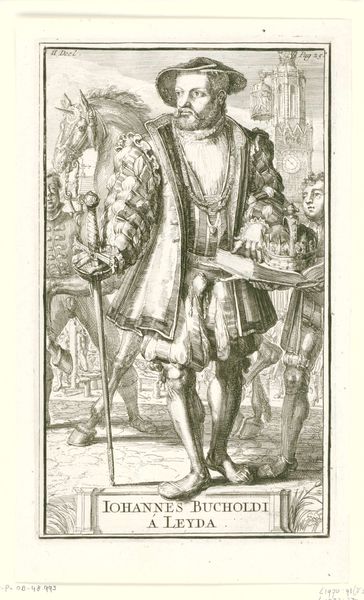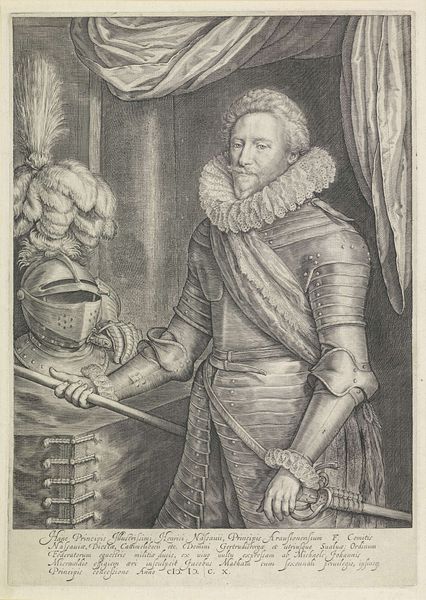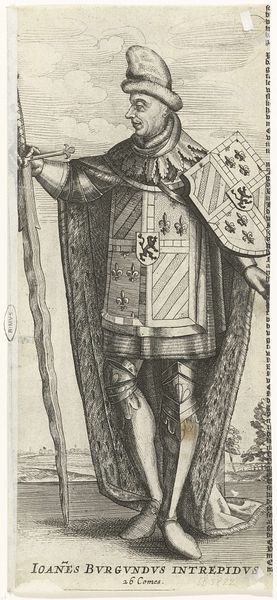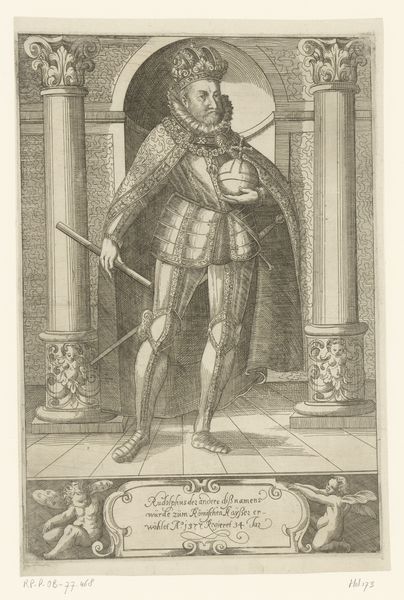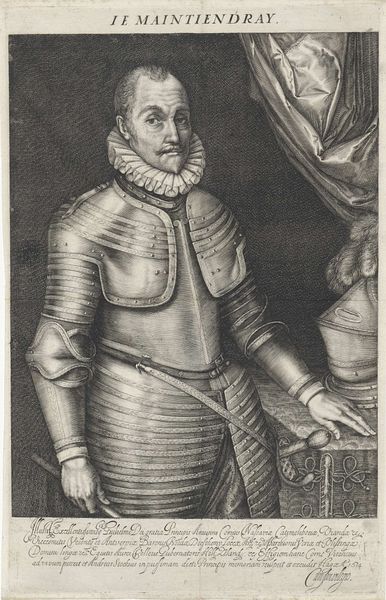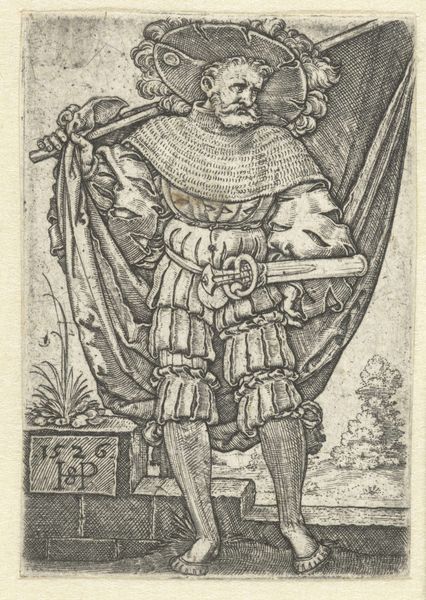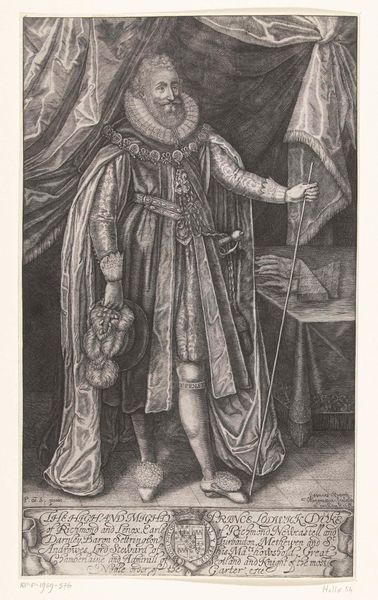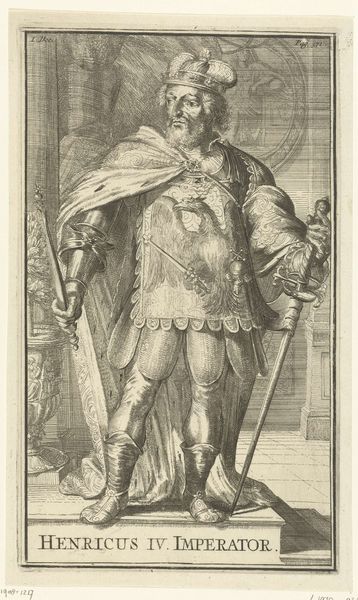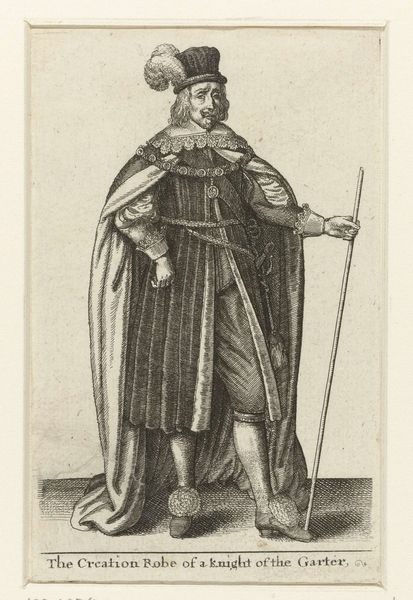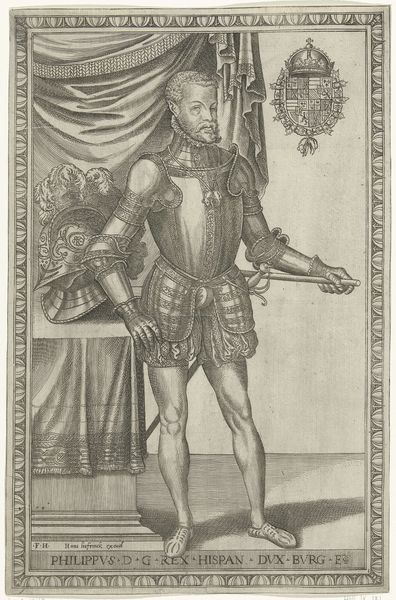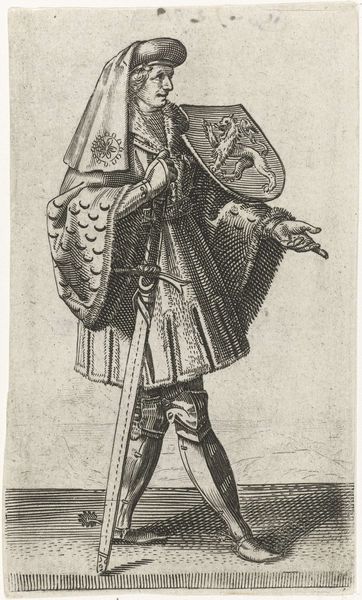
print, etching, engraving
#
portrait
#
baroque
#
dutch-golden-age
# print
#
etching
#
old engraving style
#
figuration
#
personal sketchbook
#
history-painting
#
engraving
Dimensions: height 309 mm, width 219 mm
Copyright: Rijks Museum: Open Domain
Curator: Look at this etching, made around 1630. It's a portrait of William I, Prince of Orange. Editor: There's a severity to it, almost intimidating, isn’t there? The intricate details captured through the etching give a certain gravity to the figure, the weight of responsibility practically radiating off of him. Curator: It speaks to the image of leadership the Dutch Republic was keen to cultivate, particularly during the Dutch Golden Age. Think of it as carefully constructed propaganda. Editor: Constructed is the key word. Observe the rendering of the textures, though—the fur trim of his coat, the polished surface of the helmet on the table. Consider the labor involved in translating such tactile sensations into a reproducible image. It transforms William into an almost mythical being through meticulous workmanship. Curator: Mythologizing figures like William of Orange was crucial for national identity, wouldn't you agree? Etchings and engravings, because they were relatively inexpensive to reproduce, played a vital role in disseminating those carefully managed images. This print, mass produced, became accessible and shaped the popular memory. Editor: It’s a beautiful example of reproductive printmaking; the lines are so fine and deliberate. It almost makes me wonder about the artist, and the kind of labor this demanded—hours hunched over a copper plate to convey authority. Did the social position and perspective of the engraver reflect a particular bias, or serve political or cultural interests? Curator: No artist is recorded, unfortunately. That silence speaks volumes too about artistic hierarchies of the period; the image of the prince took precedence. Editor: Right. What strikes me now is not just the 'who' but also the 'how' and 'why' –the tangible connection to artistry in its most deliberate form and what interests and perspectives dictated its dissemination. Curator: So it seems we're both struck by how images are constructed and circulated, though perhaps with slightly different focal points. I am seeing history at work. Editor: I’m left wondering about how materials and artistry serve ideologies, reflecting on the lives implicated in this single sheet.
Comments
No comments
Be the first to comment and join the conversation on the ultimate creative platform.
